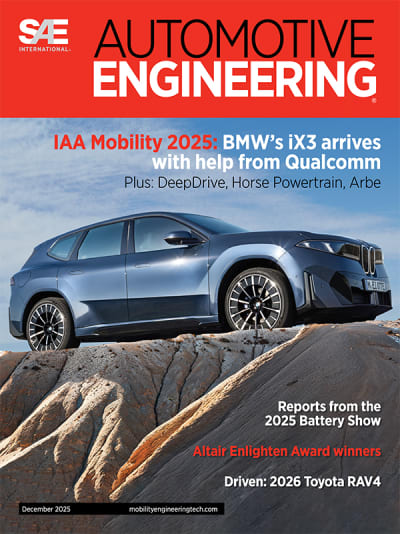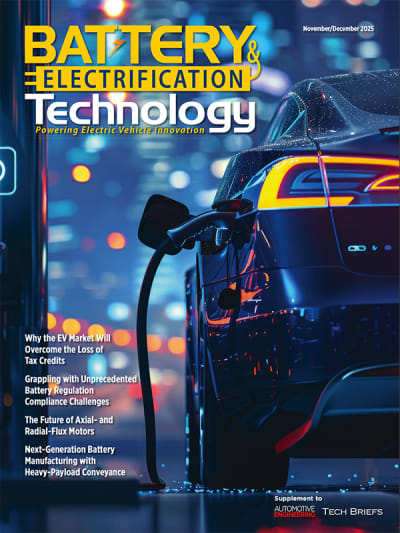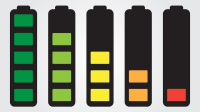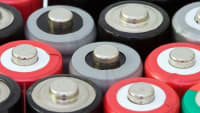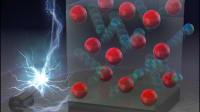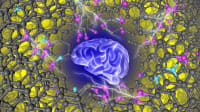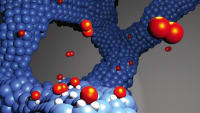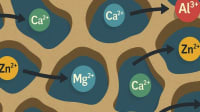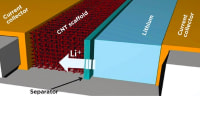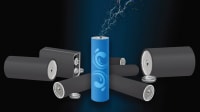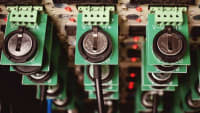A Successful Catalyst Design for Advanced Zinc-Iodine Batteries
An electronic structure regulation strategy provides robust guidance for constructing advanced iodine catalysts and optimizing their battery performance.
Aqueous zinc-ion batteries (ZIBs) have attracted extensive attention due to their high safety, abundant reserves, and environmental friendliness. Iodine with high abundance in seawater (55 μg L-1) is highly promising for fabricating zinc-iodine batteries due to its high theoretical capacity (211 mAh g-1) and appropriate redox potential (0.54V). However, the low electrical conductivity of iodine hinders the redox conversion for an efficient energy storage process with zinc. Additionally, the formed soluble polyiodides are prone to migrate to the Zn anode, leading to capacity degradation and Zn corrosion.

To address the existing issues in Zn-I2 batteries, the research team presents the coprecipitation method to encapsulate molybdate ions into a zeolitic imidazolate framework-8 (ZIF-8), followed by electrospinning and calcination to create free-standing porous carbon fibers with Zn single atom sites and molybdenum carbide clusters (Zn-SA-MoC/NCFs). With a hierarchical porous carbon framework for favorable mass transfer, the integration of molybdenum carbides with single-atom catalysts are expected to amplify the adsorption capability for iodine species and modulate the catalytic activity with an optimal charge redistribution. Thus, the assembled Zn-I2 batteries demonstrate a large specific capacity of 230.6 mAh g-1 at a current density of 0.5 C (1 C= 0.211 mA cm-2) and a capacity retention of 90 percent after 20,000 cycles. With the fundamental understanding of enhanced electrocatalysis by incorporating of Zn-SA with MoC clusters, the concept study on electronic structure modulation between hosts and iodine species demonstrates the basic principles for high-performing Zn-I2 batteries and beyond.
This study is the first to demonstrate the manipulation of the electro-catalytic activity of MoC clusters via the incorporation of Zn-N4 sites for iodine redox reaction. The electronic structure regulation strategy provides robust guidance for constructing advanced iodine catalysts and optimizing their battery performance.
For more information, contact Jintao Zhang at
Top Stories
INSIDERLighting Technology
![]() Using Ultrabright X-Rays to Test Materials for Ultrafast Aircraft
Using Ultrabright X-Rays to Test Materials for Ultrafast Aircraft
INSIDERManufacturing & Prototyping
![]() New 3D-Printable Nanocomposite Prevents Overheating in Military Electronics
New 3D-Printable Nanocomposite Prevents Overheating in Military Electronics
INSIDERDefense
![]() F-22 Pilot Controls Drone With Tablet
F-22 Pilot Controls Drone With Tablet
Technology ReportAR/AI
![]() Talking SDVs and Zonal Architecture with TE Connectivity
Talking SDVs and Zonal Architecture with TE Connectivity
INSIDERManufacturing & Prototyping
![]() New Defense Department Program Seeks 300,000 Drones From Industry by 2027
New Defense Department Program Seeks 300,000 Drones From Industry by 2027
INSIDERAerospace
![]() Anduril Completes First Semi-Autonomous Flight of CCA Prototype
Anduril Completes First Semi-Autonomous Flight of CCA Prototype
Webcasts
Test & Measurement
![]() SAE Automotive Engineering Podcast: Additive Manufacturing
SAE Automotive Engineering Podcast: Additive Manufacturing
Information Technology
![]() A New Approach to Manufacturing Machine Connectivity for the Air Force
A New Approach to Manufacturing Machine Connectivity for the Air Force
Automotive
![]() Optimizing Production Processes with the Virtual Twin
Optimizing Production Processes with the Virtual Twin
Power
![]() EV and Battery Thermal Management Strategies
EV and Battery Thermal Management Strategies
Manufacturing & Prototyping
![]() How Packet Digital Is Scaling Domestic Drone Battery Manufacturing
How Packet Digital Is Scaling Domestic Drone Battery Manufacturing
Automotive
![]() Advancements in Zinc Die Casting Technology & Alloys for Next-Generation...
Advancements in Zinc Die Casting Technology & Alloys for Next-Generation...


